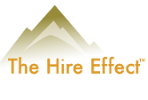The author Jim Collins brought us a powerful metaphor for running a business. He asked us to think of our business as a bus. Then he asked two important questions: Do we have the right people on the bus? Are they in the right seats?
Using this metaphor is powerful because you aren’t just trying to fill a gap by hiring more people, you are being intentional about culture, and equally as important, intentional about accomplishing your vision. But how in the world do you know if you have the right people and if they are in the right seats? This is something many authors and business leaders have hinted at but have not been clear on how to actually do.
Let’s get clear on a couple words before we get to the action.
A title is simply what you call a person’s body of work. The roles they hold are the responsibilities they’ve committed to ensure are successfully completed. A title does not equal a role. Someone with a title can have and hold multiple roles or just one.
Okay, now how do we take stock of what talent you’ve already got on the team and spot inconsistencies and gaps to move forward? We ask ourselves a few critical questions:
What do the right people look like?
- Do they support and act with your core values?
- Do they match the mood of your company?
- Do they have the critical skills you need?
- Do they have the personality traits you need on the team?
What does the right seat look like?
- Does each person get their roles?
- Do they want those roles?
- Are they capable of holding those roles?
Now for the good part, what do you actually do to figure out if you have the right people in the right seats?
Taking Stock
You need to take stock. What skills and personality traits do they have that make them successful in their jobs? What responsibility do they say they hold? Are they willing to be held accountable? What metrics will prove success?
Your team members should each have a very clear statement of what their roles are, how they are qualified to hold those roles, and metrics that measure their success. Completing this exercise and creating a Role Responsibility Document for each of your people will start to reveal if you have the right people in the right seats and if you share their interpretation of their roles. Take a look at and complete this exercise. Mention of the Module 3 template is referring to a tool available in a Virtual Membership for The Hire Effect; although the template isn’t included, you can see two examples attached within the exercise.
Identifying the Gap
Completing this exercise with your team will reveal the gap in your talent needs and perhaps reveal a few other things. For instance, perhaps you need to:
- Consolidate some roles (too many people holding pieces and parts but no one hold responsibility it’s done)
- Standardize roles that are held by multiple people (several people doing what they think is the same thing and it isn’t)
- Initiate conversations so you can come to a shared narrative of roles (you and your employee disagree on what their responsibilities actually are)
Continuing to hire people because you need capacity isn’t the smart way to grow. So what are your plans for growth in the size of and talents on your team?
####
Miche Rayment is the Founder and Chief Facilitator for The Hire Effect™. The Hire Effect’s clients learn how to work smart with the team they have and make a great hire when they need it. The Roles Responsibility Document creation is part of The Hire Effect | Team Assessment.

